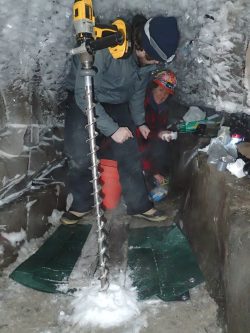
In recent years, the idea of life on other planets has become less far-fetched. NASA announced June 27 that it will send a vehicle to Saturn’s icy moon Titan, a celestial body known to harbor surface lakes of methane and an ice-covered ocean of water, boosting its chance for supporting life.
On Earth, scientists are studying the most extreme environments to learn how life might exist under completely different settings, like on other planets. A University of Washington team has been studying the microbes found in “cryopegs,” trapped layers of sediment with water so salty that it remains liquid at below-freezing temperatures, which may be similar to environments on Mars or other planetary bodies farther from the sun.
At the recent AbSciCon meeting in Bellevue, Washington, researchers presented DNA sequencing and related results to show that brine samples from an Alaskan cryopeg isolated for tens of thousands of years contain thriving bacterial communities. The lifeforms are similar to those found in floating sea ice and in saltwater that flows from glaciers, but display some unique patterns.
“We study really old seawater trapped inside of permafrost for up to 50,000 years, to see how those bacterial communities have evolved over time,” said lead author Zachary Cooper, a UW doctoral student in oceanography.
Cryopegs were first discovered by geologists in Northern Alaska decades ago. This field site in Utqiaġvik, formerly known as Barrow, was excavated in the 1960s by the U.S. Army’s Cold Regions Research and Engineering Laboratory to explore large wedges of freshwater ice that occur in the permafrost there. Subsurface brine was eventually collected from the site in the 2000s.
Read more at UW News »
